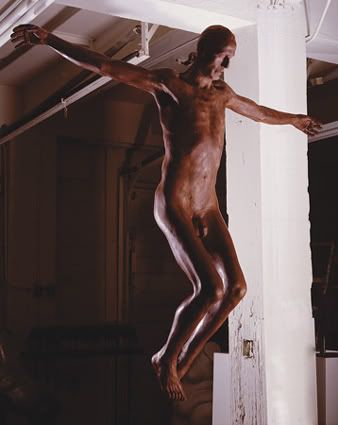 Today would have been the day that the LAB gallery, a subdivision of the Roger Smith Hotel on Lexington Avenue in New York, displayed the work of Cosimo Cavallaro, “My Sweet Lord” a six foot anatomically correct sculpture made out of chocolate.
Today would have been the day that the LAB gallery, a subdivision of the Roger Smith Hotel on Lexington Avenue in New York, displayed the work of Cosimo Cavallaro, “My Sweet Lord” a six foot anatomically correct sculpture made out of chocolate.Although the Catholic League (with 300,000 members) rallied their case through emails to 500 religious groups of all denominations and effectively shut the show down, there is a tradition of the Naked Christ in art that goes back hundreds of years.... at least to St. Francis of Assisi. in 1200.
St. Francis: “Follow the naked Christ”
The tradition of following the naked Christ goes back to St. Francis who stripped himself naked in the town square to announce his intention to follow the naked Christ:
St. Francis is quoted as saying: Nudus nudum sequi Christum, “Naked to follow the naked Christ.”
St. Francis saw Christ as naked, as did these artists:

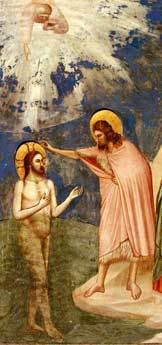
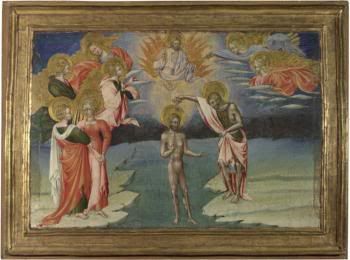
Giovanni di Paolo 1200’s
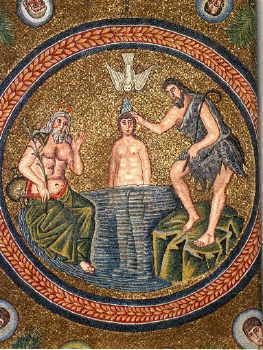
Ravenna Mosaic
There's nothing in art history to compare to Cosimo Cavallaro's Christ until Michaelangelo's wooden Naked Christ of 1494:

The Catholic Church and Nakedness
Many historical church leaders have disassociated nudity with sexual immodesty. St. Thomas Aquinus, for example, defined an immodest act as one done with a lustful intention. Therefore, someone who disrobes for the sole purpose of bathing or recreating cannot be accused of immodesty.
Pope John Paul II writes: "Sexual modesty cannot then in any simple way be identified with the use of clothing, nor shamelessness with the absence of clothing and total or partial nakedness. . . . Immodesty is present only when nakedness plays a negative role with regard to the value of the person, when its aim is to arouse concupiscence, as a result of which the person is put in the position of an object for enjoyment. . . . There are certain objective situations in which even total nudity of the body is not immodest." ref
The Naked Christ in Modern Art
These artists had to battle for the authenticity of their work:
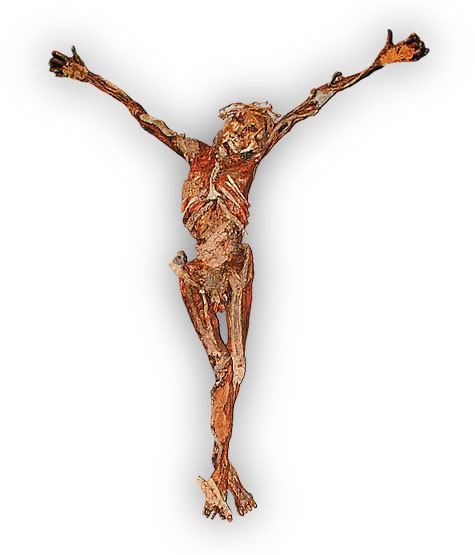
Naked Christ: sheep bones, scrap metal, scrap wood
The sculptor Michele Coxon who lives in Wales, says she drew inspiration for her Naked Christ from sheep skeletons, abandoned machinery, and river flotsam. “I wanted the image of a man who has suffered and whose earthly body is decaying.” Naked Christ
This sculptor had to battle the church over this naked Christ in the stages of the Cross:
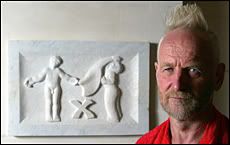
Llew Summers; Naked Christ; Stages of the Cross
A beautiful Naked Christ by the sculptor Bill Hopen:

The strongest expression of the Naked Christ in modern art is that of the sculptor Subirachs, on the Passion Facade of the basilica of the Sagrada Familia in Barcelona. The sculptor was completing the work of the architect Antoni Gaudi who designed the building 123 years ago.
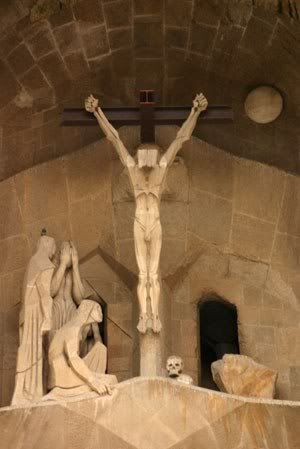
Josep Maria Subirachs, the sculptor chosen in 1986 to execute Gaudí's plans and initially known to be an atheist (he is the author of statements such as "God is one of Man's greatest creations..."), now confesses to nothing more virulent than a respectful agnosticism.
Known for his easy-to-identify hard-edged and geometrical interpretations of the human form, Subirachs has stated that he was "born nine months after the death of Gaudí." When multitudinous demonstrations of artists, architects, and religious leaders called for his resignation in 1990, Subirachs replied, "My work has nothing to do with Gaudí."
The casus belli at that moment was the anatomically complete rendering of a naked Christ on the cross, which Subirachs defended as part of the stark realism of the scene he intended to portray. Contracted on the two conditions that he be allowed complete artistic freedom and living space at the work site, Subirachs eventually prevailed, and his work is now virtually undebated. "I intended a contrast with Gaudí's more baroque style," explains the sculptor, "with a harder vision and a brutalization of the stone itself."
Temple Expiatori de la Sagrada Familia]
Website of Josep María Subirachs, Sculptor
The Naked Christ
For more than 800 years there has been an art tradition of portraying the Naked Christ. Some of these are depictions of the baptism, where nakedness was the practice. But the strongest expressions of Christ's nakedness and humanity have been that of the crucifixion... these are, in my opinon: Michaelangelo, Subirachs and Cavallaro.
The Christ figure is naked because he has gone through days of torture and humiliation before being nailed to a cross. What astounds me, after all these hundreds of years, is that the Church and the public do not protest at depictions of torture, including the tortured Christ, but react with horror at the Naked Christ.
Detainee at the Roger Smith
"Detainee", a mixed-media, action oriented and interdisciplinary collaboration will be presented at The Lab, from Monday, January 29 through Friday, February 2, 2007, during the hours of 5:30 - 8:00 p.m. Detainee links the image of the United States of America with its recent decision to implement the Military Commissions Act of 2006, focusing within this performance work on the absolute power that the State has determined is within its moral and political prerogative to hold over any individual. David Duckworth, as a bound and blindfolded detainee, becomes the paintbrush with which interrogators paint the American flag on the floor of the gallery
Just two months ago this performance art was shown at the same LAB Gallery at the Roger Smith Hotel that cancelled the exhibition of Cavallaro's naked Christ, "My Sweet Lord." Perhaps the public did not raise the hue and cry because the detainee depicted was not naked, or maybe Americans have become used to images like this.















No comments:
Post a Comment